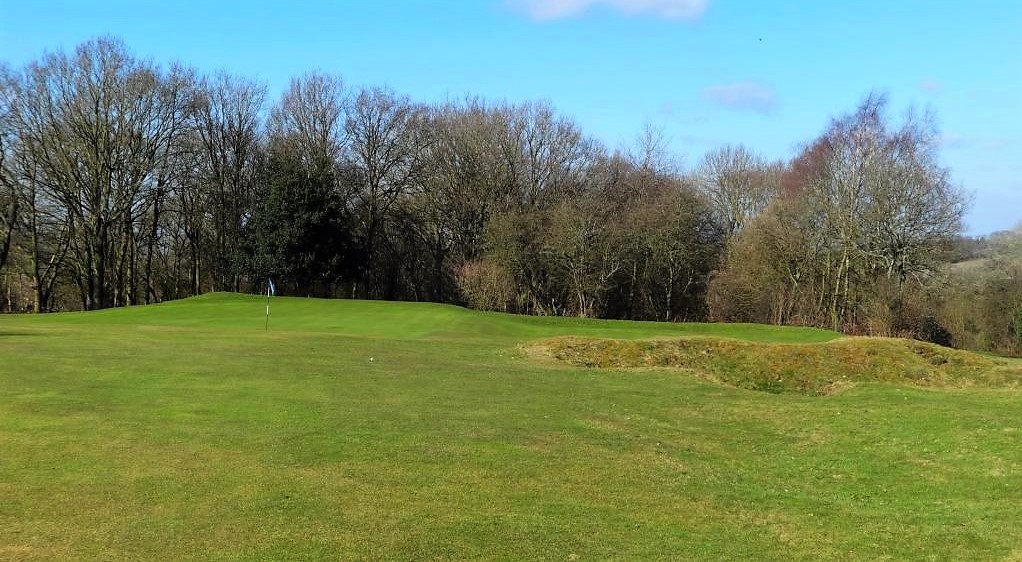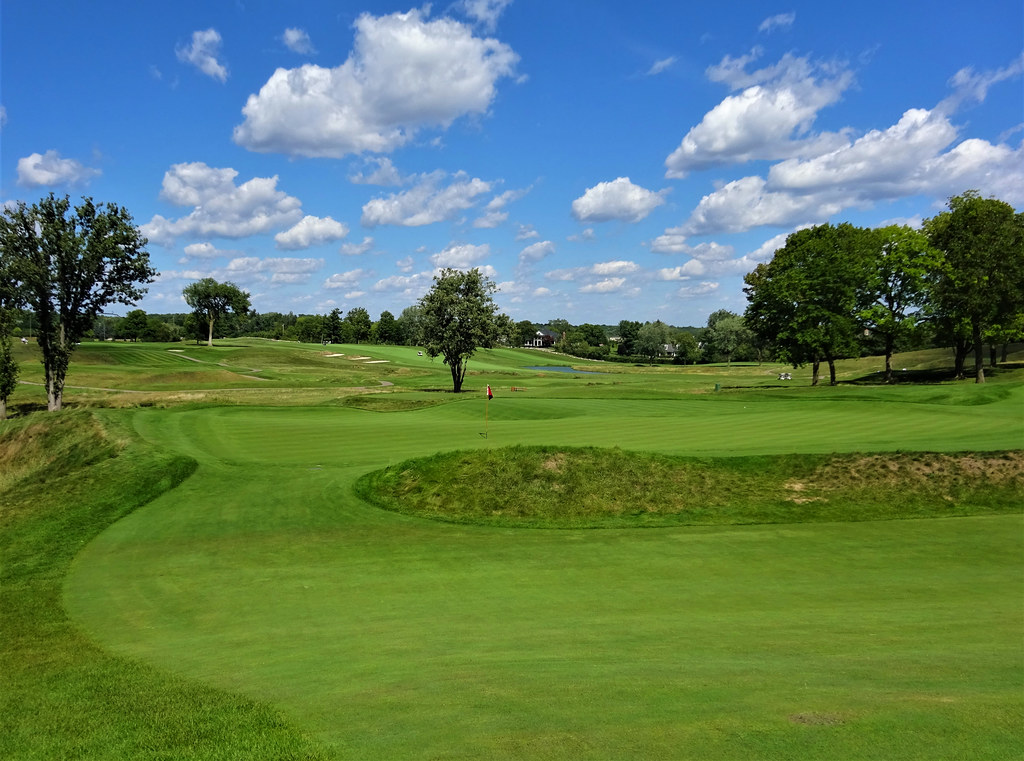A string of Detroit suburbs run almost perfectly from north to south which include Wixom, Northville, Novi, Plymouth, Canton & Belleville. Northville is one of the northernmost of these suburbs and while it is part of Metro Detroit, Northville doesn’t feel like a suburb which has much connection to the city. This may be due to Northville being west of I 275 which in effect cuts off the western suburbs. Northville is close enough to Ann Arbor to be included in its catchment. This information is only important to impart the isolation of Northville and that is no different so far as top golf clubs are concerned. Located in Northville, Meadowbrook Country Club has no competition in this part of town as the supreme golf club. The closest top flight club is Franklin Hills which is in a different catchment area.
Founded in 1916 based on six holes designed by Willie Park Jr, Meadowbrook has long been a fixture of Detroit area golf. In 1921 the course was expanded to 18 holes, possibly using the original Park Jr routing of which only six holes were completed. Several architects had a say in later iterations and these include Collis & Daray, Donald Ross, Art Hills & Jerry Matthews. Once a much more prosperous and powerful city than is the case today, Detroit clubs hosted three USPGA Championships between 1947 and 1955. Meadowbrook had its turn in 1955 after its pro, Chick Harbert, won the event in 1954 by beating Detroit native, Franklin Hills pro and defending champion, Walter Burkemo 4&3 at Birmingham CC. The well liked and respected Mr Burkemo was wounded twice in the European Theatre of WWII, earning a Purple Heart on both occasions.
In addition to the PGA Championship, Meadowbrook hosted the ill-fated Motor City Open on four occasions; 1948, ’49, ’54 & ‘59. The 1955 Motor City Open was cancelled because Meadowbrook won the bid to host the PGA Championship that year. The longest sudden-death playoff in PGA Tour history occurred at the 1949 tournament. Cary Middlecoff and Lloyd Mangrum struggled on for eleven holes and were eventually declared co-winners after darkness settled in. However, perhaps the most famous of the Motor City Opens was the 1948 event in which Ben Hogan defeated EJ Harrison in an 18 playoff. Both Gene Sarazen and Bobby Locke made the cut despite their advanced years. It is also noted that Pete Dye played, but failed to make the cut. The organizers decided not to honour weekly passes and instead charged $2.50 a ticket for the playoff. Because extra tickets were sold, both players received $160.50 as their share of the gate! Less than a year later Hogan was nearly killed in an automobile accident.


To be frank, Meadowbrook was not a club I heard much about while living near Detroit – Ann Arbor. I have heard more about the course in the past four years than was the case for the previous fifty-five…and for good reason. Talk of work to the course initially started after the DuPont herbicide debacle in 2011. Detroit clubs used the chemicals to kill weeds and later found that many trees were damaged or killed by spraying. In 2014 winter ice storms caused damage to greens. It was clear something needed to be done, but what? Picked from a list of fifteen candidates, Andy Staples convinced the powers that be to go on fact finding missions to explore the work of Willie Park Jr. One such trip was to England where Park Jr’s Huntercombe lie in waiting. These experiences were enough for the club to take a leap of faith and close its doors in 2016 for an 18-month overhaul of Meadowbrook. The idea was to use Park Jr as inspiration to breathe life back into a course which had lost any sense of golden age identity it may have had. The membership was so enthusiastic and encouraging that Staples had to be the voice of reason in one or two situations. There are six Park Jr holes which served as cornerstones for the new course; 2, 3, 7, 10, 11 & 18, although the final green is a Ross creation.
I won’t do a before and after photo tour mainly because Meadowbrook was a small blip on my radar prior to the Staples revisions. Unlike many Detroit area clubs, I never stepped foot on the property until a few weeks ago.
The rather shaggy looking opener is not visually representative for the remainder of the course. The tee was shifted left to allow play away from the boundary of the infamous 8 Mile Rd or as some old folks call it, Baseline Rd, and toward the new water feature on the right. Like many things perplexing about Michigan, the explanation for the name "Baseline" is fairly complicated and involves Ohio. Baseline was the original name due to it acting as a survey baseline for the United States Public Land Survey when Michigan was part of the Northwest Territories. When surveyed in 1815, there were to be 48 equal 6 miles by 6 miles Michigan townships north and south of the baseline. There is still a marker indicating the first pole position for the survey at the intersection of 8 Mile and Haggerty Roads.

The green remains on the same site, but the front is slightly raised to allow for more hole locations.

The rollicking 2nd is a decent length par 5 with a tee shot playing blindly over a hill. The fairway was shifted a bit right, but plays to Park Jr's original green. Notice the Park Jr - like mounding beyond the bunker which help defend the short-cut. The green has a serious false front which takes a forceful strike to bounce one in.

It seems the entire golf world talked about the third for some time. Staples created a very close version of Huntercombe's 4th green. What is rarely mentioned is that the hole looks rather plain from the tee. Perhaps not so much as Huntercombe, but if one doesn't know what is coming the green will be a shock. The new green is set away from the boundary, on the downslope of hill very similar to Huntercombe.
Huntercombe's 4th

Meadowbrook's 3rd



The use of short grass around the green is a major departure from the Huntercombe version.

More to follow.
Ciao